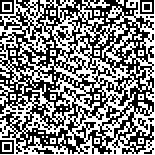本文已被:浏览 3720次 下载 0次
中文摘要: 摘 要 目的 调查脑卒中患者健康素养与营养风险情况,探索营养风险影响因素。方法 采用便利整群抽样法,应用健康素养评价表和营养风险筛查表对延边地区280例脑卒中住院患者进行调查。结果 脑卒中患者健康素养处于临界水平;48.2%的脑卒中患者存在营养风险;不同人口学特征的脑卒中患者营养风险有明显差异(P<0.05);脑卒中患者健康素养与营养风险呈负相关(r=-0.648,P<0.01);多重线性回归分析显示:营养风险危险因素包括年龄、吞咽障碍和健康素养(F=29.968 P<0.001)。结论 脑卒中患者营养风险受健康素养的影响,健康素养越高,营养风险越低。应加强对脑卒中患者健康素养教育,从而降低患者的营养风险。
Abstract:Abstract OBJECTIVE To investigate the health literacy and nutritional risk of stroke patients and explore the influencing factors of nutritional risk. METHODS A total of 280 stroke patients in Yanbian were investigated by means of convenience sampling, health literacy evaluation table and nutrition risk screening table. RESULTS Stroke patients’ health literacy was at a critical level. 48.2% of stroke patients had nutritional risk. There were significant differences in nutritional risk among stroke patients with different demographic characteristics (P<0.05). Stroke patients’ health literacy were negatively correlated with nutritional risk (R =-0.648, P<0.01).Regression showed that risk factors for nutritional risk included age, swallowing disorders, and health literacy (F=29.968, P< 0.001). CONCLUSION The nutritional risk of stroke patients is affected by health literacy, and the higher the health literacy, the lower the nutritional risk. The health literacy education of patients should be strengthened so as to reduce the nutritional risk of patients.
文章编号:3202006049 中图分类号:R743.3 文献标志码:
基金项目:
| Author Name | Affiliation |
引用文本:
